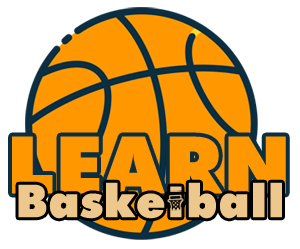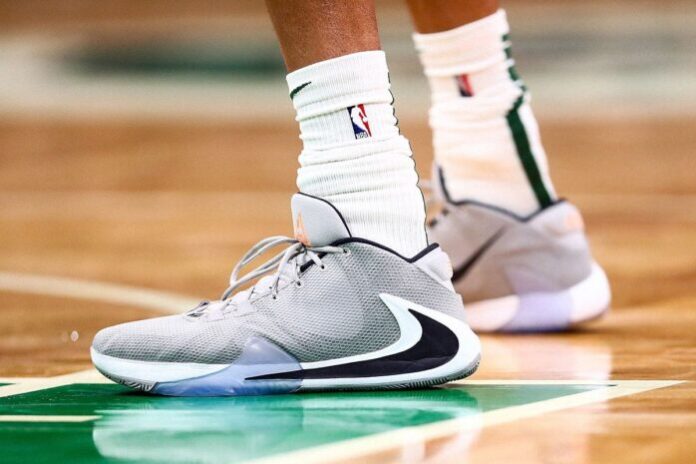
Tennis and basketball are both fantastic sports that a lot of us played as kids. If you went on to play professionally and in college, there was a person who recommended shoes for you. Sometimes you may wonder whether you could use tennis shoes that are basketball-specific, particularly if you’re doing both sports to have pleasure.
Shoes for tennis and basketball are specifically designed to ease and enhance movements specific to the two games. You can check more about it on BestTennisReviews. Basketball shoes aren’t made to perform the repetitive lateral moves used in tennis. Thus wearing basketball shoes to play tennis can strain your knees and ankles.
There’s plenty of debate regarding the merits (or) of simply wearing the same pair of shoes for tennis and basketball. The reasons (or why) basketball shoes should not be utilized for tennis and vice versa.
- Basketball shoes aren’t designed for tennis however they’re an excellent alternative if you’re playing the sport more often than.
- Basketball shoes do not have the same structural characteristics as tennis shoes to resist the impact of playing tennis court, particularly on the front of the shoe.
- Tennis shoes are smaller and lighter than basketball sneakers, which allow for swift moves on the tennis court, but don’t have the support required to perform vertical basketball moves.
- The soles of tennis shoes have the toe traction needed for the swift movements needed when playing on various court surfaces. Basketball shoe soles don’t and could slide across courts made for tennis.
The general consensus is not to wear basketball shoes for tennis, particularly if you regularly play. If you engage in tennis regularly, you can wear basketball shoes. However, it’s not the ideal choice for your ankles, knees, or game. You’re obligated to have fun as safely as you can by wearing the appropriate tennis shoes for every sport.
What makes Basketball Shoes Different from Tennis Shoes?
 Basketball and tennis shoes maximize the movements of players that are specific to every sport. These court shoes protect players from injuries, such as ankle and knee injuries resulting from rebounding in basketball or strains caused by lateral movements in tennis.
Basketball and tennis shoes maximize the movements of players that are specific to every sport. These court shoes protect players from injuries, such as ankle and knee injuries resulting from rebounding in basketball or strains caused by lateral movements in tennis.
But, before you compare the way each court shoe has been specifically made for tennis or basketball. It is essential to know the elements that comprise each.
- Upper of the shoe: The part of the shoe that covers the foot. The front that is the upper part is known as the toe box. A good fitting toe box is essential since this section of the shoe is responsible for forwarding force. A tightly fitting toe box can restrict the movement of the foot and may cause blisters. In basketball shoes, the upper of the shoe is typically made out of breathable mesh. Certain tennis shoes utilize leather.
- Its middle sole is the area between the upper and the portion of the shoe which is directly in contact with the court. The type and the number of materials used to determine shoe comfort and flexibility. Shoes for tennis generally are less cushioned. For basketball, midsoles can include air or gel to add cushioning.
- The outer sole (the portion in contact with the surface) is composed of a more rigid rubber compound. Tennis shoes can add more rigid rubber to help with drag during the serve. Rubber that has been blown and is soft is a good choice for the remaining part of your sole.
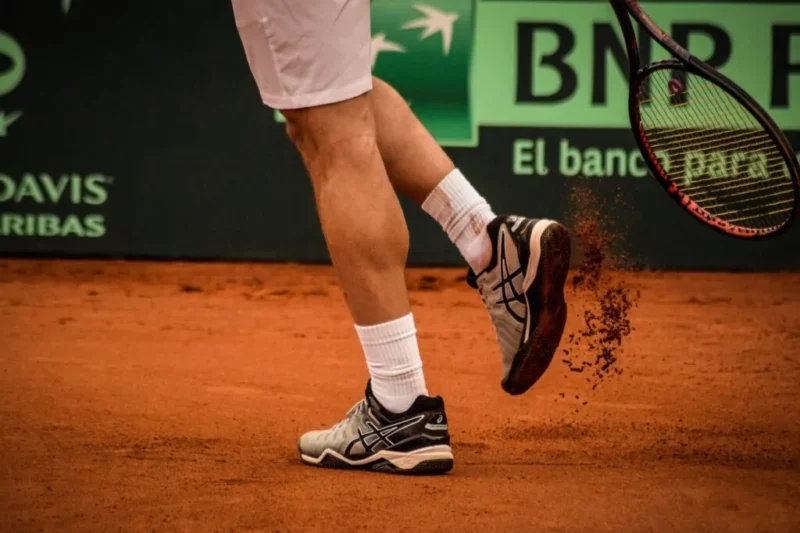 Its insole helps protect your feet from being snagged against the stitching on the shoe. For tennis and basketball, the insole can be replaced by customized inserts that can be personalized to provide arch support, comfort, and fitting.
Its insole helps protect your feet from being snagged against the stitching on the shoe. For tennis and basketball, the insole can be replaced by customized inserts that can be personalized to provide arch support, comfort, and fitting.
- The heel counter gives stability by providing an incredibly strong support system for the rear part of the shoes. The tennis shoes could have an insert of plastic inside the heel counter, which provides more support.
- The shoe’s tongue gives cushioning to the things used to secure the shoe: shoelaces or Velcro. Shoes for tennis are typically tied; basketball shoes might utilize Velcro.
Based on their shared characteristics there are many ways in which tennis shoes and basketball shoes are alike:
- The two sports both require agility flexibility as well as footwork. Tennis and basketball shoes are made to aid these kinds of movements.
- These court shoes allow your feet to rest “flat” on the court surface.
- Both basketball and tennis sneakers are offered in “low-top” lighter-weight versions, making them ideal for a tennis player’s or basketball guard’s rapid moves.
- In the majority of cases, the court shoe uppers are constructed from a breathable and lightweight mesh.
- Both offer a bit of playability on most surfaces.
However, there are important differences between basketball shoes and tennis shoes that you should be aware of in addition:
Basketball Shoes
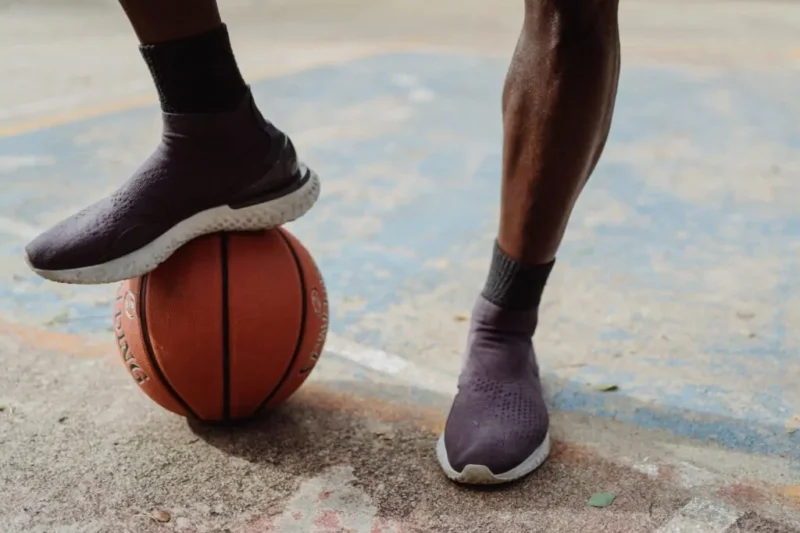 Physically basketball is all about power and agility that results in speed, speed, and velocity. The players are constantly running, dribbling, and defending as well as shooting basketballs. Players must shift direction and speed, both vertically and horizontally. A player who is attempting a lay-up, dunk, or rebound can rotate 360 degrees while in the air.
Physically basketball is all about power and agility that results in speed, speed, and velocity. The players are constantly running, dribbling, and defending as well as shooting basketballs. Players must shift direction and speed, both vertically and horizontally. A player who is attempting a lay-up, dunk, or rebound can rotate 360 degrees while in the air.
Basketball shoes need to absorb vibrations and keep the balance in the landing. With that being said, basketball court shoes are made to aid in “plant, cut, pivot, jump, run” moves while protecting you from injuries caused by these movements.
Basketball players generally require greater ankle stability as compared to tennis players. Because there are a lot greater up-and-down and rotational movements when playing basketball than in tennis. Therefore, basketball shoes are created to offer support and cushioning for vertical motions.
The soles on basketball shoes are specifically designed to use wood flooring. The tread won’t stand up to various types of surfaces (like tennis courts).
Tennis Shoes
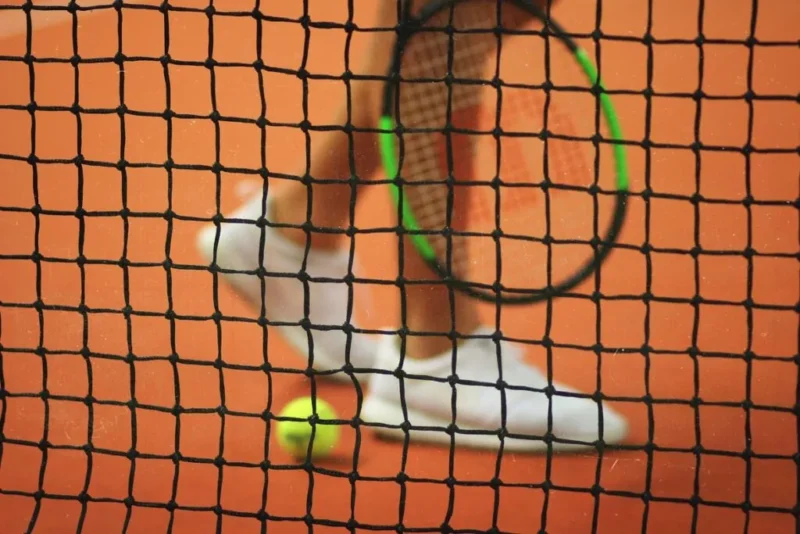 An average tennis point can be characterized by anywhere between 4-15 directional shifts. While tennis requires movements in all directions (including the backward direction), most of the tennis moves are lateral, including pivots. You must wear a tennis shoe that can handle these types of movements.
An average tennis point can be characterized by anywhere between 4-15 directional shifts. While tennis requires movements in all directions (including the backward direction), most of the tennis moves are lateral, including pivots. You must wear a tennis shoe that can handle these types of movements.
While both tennis and basketball shoes are lateral-moving, tennis shoes offer protection and assistance during side-to-side moves.
Contrary to basketball generally played on a hard court, it is possible to play tennis on different surfaces, such as grass, clay, and even composition. Tennis shoes may have various tread patterns to suit various courts. Those playing on hard courts will have more cushioning in the shoe, while clay court tennis players can benefit from a good tread and a light shoe. (Tennis shoes weigh less than those for basketball, which allows for the speed of court movements.)
Conclusion – Are basketball Shoes Good for Tennis
The right basketball shoe has much to do with the game you play. For instance, if you’re a guard, you’ll require low-top, lightweight court shoes (giving ankle support.) For those who are power forward or center, then high-tops will be best for you. They offer maximum cushioning for your ankles and support. In addition, mid-tops can be the best basketball shoes for Tennis for those who perform a variety of different positions.
If you’re looking to use your tennis shoes in your basketball sneakers and want to play tennis, then a middle-priced basketball shoe is the best option. Here are other aspects to look for in basketball shoes if you intend to use them to play tennis:
